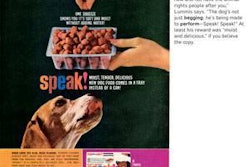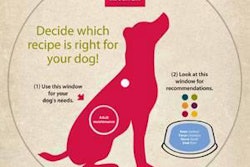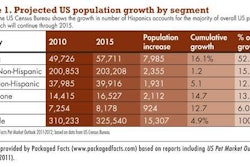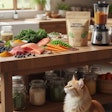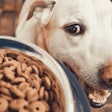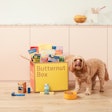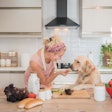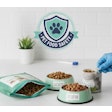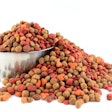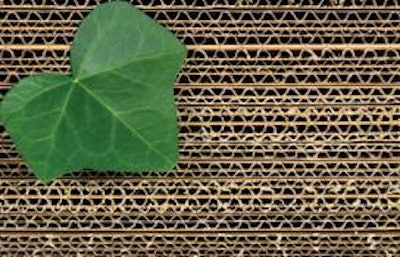
By now, sustainablity should be somewhere near the top of your list of important priorities for your petfood brand. Not only do consumers look for "green" aspects of products on the shelf like ingredient sourcing, environmentally-friendly manufacturing processes and recycled packaging materials, but a sustainable plan for your company means savings for you. Though some "greening" campaigns may be nothing more than a trend in an adapting market, sustainable packaging isn't going anywhere but everywhere, and fast. What is sustainable packaging, and which companies are making the most strides in meeting consumer demands for it?
According to Paul Kearns, director of sustainability for Exopack, a truly sustainable petfood package must focus on what Walmart calls the 7 R's. He defines these as follows:
- Remove means to take something away from the packaging, such as removing a box from a bag in box format.
- Reduce means to reduce the amount of material required for the packaging, either by size or gauge.
- Reuse is implying reuse in the same packaging application. This one is difficult to implement for most primary packaging but a ripe opportunity for pallets and shippers.
- Renew(ables) means to use certified renewable sources that are, in theory, infinite. It also applies to using biodegradable materials that, in theory, can be used to regenerate renewable materials.
- Recycle(ables),like renewables, is a cyclic concept. Using recycled materials reduces the demand for virgin feedstocks and designing packaging for recycling provides the recycled materials for reuse.
- Revenue, or more simply cost, means that the change should not increase the total cost of packaging.
- Read is exactly what you are doing here today, learning about the concepts and the possibilities of sustainable packaging.
Now let's see what companies are doing to embrace the future of the planet with their packaging materials.
The NOR Green seal from Nordenia International AG, international film manufacturer and converter, proves that a product solution is particularly sustainable. "Only products that successfully meet the demanding requirements of the complex internal criteria catalog and simultaneously fulfill the quality standards expected by Nordenia’s customers are given this award," said the company in a press release about the program. For a petfood product to receive the Green seal, it must meet an array of packaging criteria such as:
- The reduction of resources in the area of product raw materials as well as in the area of energy consumption;
- The use of recycled materials;
- The use of renewable materials and energy sources;
- Greater efficiency in production and the utilization of material;
- Legal compliance, in line with health standards, and safety for each individual and the community; and
- Proactive informing and training of the customers and suppliers.
One petfood manufacturer to recently be recognized by Nordenia for green best practices is Nestlé Purina. Purina cat food in the sizes 1.6 and 3.2kg used to be marketed in a rigid container. This has been replaced by flexible packaging produced by Nordenia, possibly reducing the use of material by 71%. The lower costs resulting from the reduction in raw materials had positive effects in the area of logistics. The packaging is particularly space-saving in a pre-made, unfilled condition, and it is possible to transport more using a smaller number of pallets. The result is lower transportation costs and less pollution due to more efficient loading.
Specifically, the Purina One Beyond brand has been making strides for packaging sustainability. Its bags are made of over 90% renewable materials, use soy inks for the printing and bioplastics made from corn. The company hopes to have packaging made of 100% recycled materials in the near future.
Petfood maker The Honest Kitchen completely revamped its packaging and graphic design several years ago. The packaging reduces materials usage and waste with a fine, recyclable, "minimalist," unprinted barrier bag that efficiently protects the food inside. The bag is fitted with a fold-down coffee tie to keep the food fresh after opening. That bag is enclosed in a 100% recycled box made from unbleached kraft paperboard. The box is printed with soy-based inks and the finished product is 100% biodegradable or recyclable again after its use.
Hops and Grain is a collaboration of two distinct arts, brewing craft beer and baking tasty dog treats, both in a eco-friendly way. The largest ingredient in this start-up company's craft beer recipes is malted barley. To create the beer, these special grains are steeped to convert the starches into fermentable sugar. Although the sugars have been removed, there still remains a large portion of protein, leaving the perfect ingredient for dog treats, claims Hops.
Rather than throw the grains away, Hops and Grain combines them with a few other savory ingredients and bake. The "reused" dog biscuits are packaged in re-sealable, biodegradeable rice paper packaging. "Throughout production and packaging, we monitor our impact very closely," says the company website. "We feel that by re-using these grains to create a product for our dogs and packaging them using sustainable materials, we are doing our part to keep our craft sustainable."



